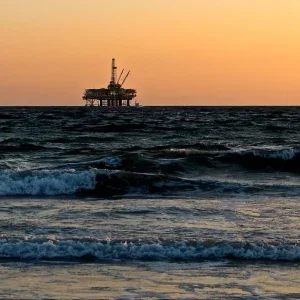The company said fully-financed mine construction will commence shortly.
Ariana Resources managing director Kerim Sener said: "Following successful geochemical work undertaken in 2014, we expanded our soil geochemical programme to identify new target areas across the Karakavak prospect. We have now more than doubled the number of drill targets and identified multiple new veins, which bodes well for future exploration of the Kiziltepe Sector.
"With 12 targets identified in this one prospect area, five of them being entirely new, we look forward to initiating a drilling programme once the Kiziltepe Mine at Red Rabbit enters construction.
"Based on the data collected and interpreted so far, we fully expect additional resources to be defined within a short trucking distance to the planned processing plant. This has the potential to enhance the life of mine and indeed economics of our flagship gold project.
"Our exploration over the past 18 months is clearly bearing fruit and has gained huge significance now that we have received the forestry approvals for Kiziltepe. We are highly encouraged by the targets that we have generated and are keen to press on with drill-testing."
Soil geochemical programme
Utilising the soil samples collected previously for XRF analysis, an area covering the Karakavak and Karakavak South prospects was analysed by conventional geochemical methods on a 50m by 200m sampling grid. Gold and other trace elements were analysed following an aqua regia extraction and ICP-MS or ICP-AES finish. A total of 399 samples were sent to ALS Global for analysis. An area of 4.2km2 was covered and the results for gold and silver are shown in Figure 1.
Twelve significant gold in soil geochemical anomalies over 20ppb Au were identified, five of which represent new discoveries and are currently untested. Peak gold in soil results of 334ppb, 263ppb, 196ppb, 152ppb and 117ppb were encountered. These zones of gold anomalism are also largely coincident with anomalous silver in soil results (>150ppb). There also appears to be a silver-rich and gold-poor style of mineralisation represented in the data, which will need to be followed up with further fieldwork.
Some of the anomalous areas were previously rock-chip sampled and these data confirm that much of the mineralisation is associated with low-sulphidation gold-silver bearing veins. Peak rock-chip grades across the Karakavak area include: 20.80g/t Au and 33.50g/t Ag, 8.89g/t Au, 3.99g/t Au and 2.60g/t Ag, 3.54g/t Au and 9.88g/t Ag, 2.77g/t Au and 1.98g/t Ag, and 2.30g/t Au and 8.09g/t Ag. However, the most highly anomalous area encountered in the soil data appears associated with the boundary zone between ophiolite and later volcanic rocks. In addition, a further highly anomalous area to the south corresponds to minor quartz veins and extensive alteration, which has not previously been sampled. These two areas will be prioritised for further fieldwork.
In addition to the work outlined above, 1,242 new soil samples were collected for X-Ray Fluorescence ("XRF") analysis in the Karakavak North area (Figure 1). This additional sampling was undertaken in order to expand the existing soil geochemical grid to cover an area in which extensive quartz vein float had been encountered during the 2014 ground magnetics programme. The total area covered by this new sampling is 7km2 and extensive anomalism in various pathfinder elements was encountered throughout the geochemical grid. In particular, a major E-W trending structure, which shows evidence of veins and extensive silicification has been identified, which carries significant gold mineralisation at its eastern end. Historic drilling results from this area provided the following intercepts:
- KR1-02: 53m @0.4 g/t Au
- KR2-02: 143m @ 0.2 g/t Au
Although wide and low grade, these intercepts demonstrate that substantial flux of gold-bearing fluids occurred in this area. Here and elsewhere across the prospect area, higher-grade mineralisation is developed in places on several of the major structures. In addition, ground magnetic geophysics shows that some vein systems are developed within corridors of lower magnetic response, possibly corresponding to zones of alteration. Such corridors, containing veins, silicification and alteration will require systematic drill-testing in the future. Karakavak is one of several prospects in the Kiziltepe Sector that requires drill-testing and is within trucking distance to the planned Kiziltepe plant.






